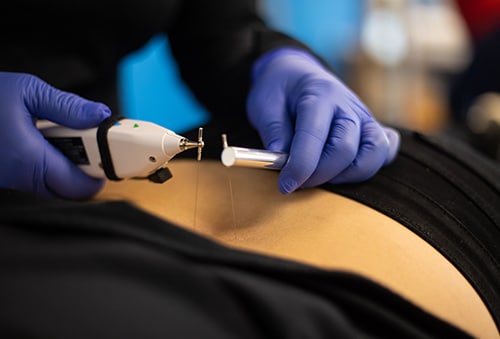Would you like to continue or select additional body parts?

- Home
- Treatments
- Surgical
Spinal Cord Stimulator
Spinal cord stimulation uses electrical impulses to relieve chronic pain of the back, arms, and legs. These electrical impulses prevent pain signals from being received by the brain.
Prior to permanent implantation of the spinal cord stimulator, each patient must undergo an external trial stimulator. To affix the trial stimulator, your doctor will insert one or more insulated wire leads through an epidural needle or a small incision into the epidural space, which is the space surrounding the spinal cord. Electrodes at the end of the lead produce electrical pulses that stimulate the nerves, blocking pain signals. At this time, you will give feedback to help your doctor determine where to place the stimulators to best block your pain. The leads are connected to an external trial stimulator, which will be used for approximately one week to determine if spinal cord stimulation is right for you.
If you and your doctor find that the level of pain relief is acceptable, the system will be permanently implanted. One or more permanent wire leads are inserted through an epidural needle or small incision into the predetermined location in the epidural space. A second small incision is made, and the implantable pulse generator (IPG) battery is positioned beneath the skin, and the leads are connected to the IPG battery. It is most often placed in the buttocks or abdomen. The implant’s electrical pulses are programmed with an external wireless programmer. Each patient has the ability to turn the system on or off through the programmer, adjust stimulation power, adn switch between different programs.
Candidates for spinal cord stimulation include those who suffer from neuropathic pain and have yet to find chronic pain relief from conservative treatments.